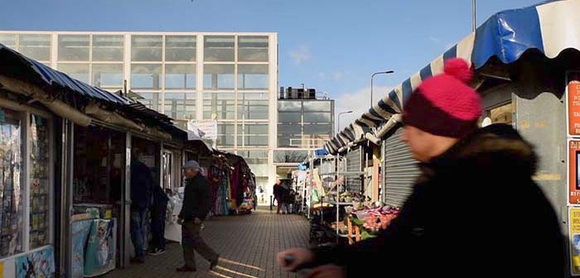
During November 22-23, INTI was in Milton Keynes for the first of five meetings as part of the New Towns Arrival Cities project. Initiated as a platform for New Towns to learn from each other’s experience with accommodating rapidly growing and diversifying populations, the two-year EU-funded project brings together local communities and representatives from the six European partner cities of Milton Keynes, Sabaudia (Italy), Grand Paris Sud (France), Vällingby (Sweden) and Aarhus (Denmark).
Planned for homogeneity, strained by a growing population and increasing diversity
Milton Keynes was built in 1967 as part of the third generation of cities mandated by the 1946 British New Towns Act, and was to more flexibly accommodate organic growth compared to its predecessors. It is equipped with an efficient American-style road grid with roundabouts and a continuous network of pedestrian paths and bicycle “redways”, a robust structure of 1km2 “gridsquare” neighbourhoods with their own local centres, a high-modernist Town Centre with heritage status, and green parks covering 40% of the city’s total area. Planned for a homogeneous white population, however, the city’s social infrastructure is being strained by rapid migration, with ethnic minorities now accounting for more than a quarter of MK’s inhabitants. The influx of newcomers, together with social housing being replaced with private sector renting, have led to transient communities, social problems, and the general decline of gridsquare neighbourhoods such as Netherfield and Fishermead. Diminishing state resources have also contributed to the closing of several local centres and the commercialization of public spaces such as the Town Centre, originally designed as an open High Street. There is a lack of the kinds of neutral common spaces that invite mixing and social cohesion, which is compounded by the insufficient public transportation that limits the mobility of those who cannot afford a car or are too young to drive.
Art, Culture and Identity
Since its beginnings, grassroots volunteer cultural organizations have been active in building Milton Keynes’s vibrant art scene, and it is these groups that the City Council is now turning to as a way of establishing a platform for cultural exchange and social cohesion. They include the MK Museum, the MK Islamic Arts Heritage and Culture Organization which organizes the annual Art in the Park event and education programmes about cultural heritage, or the Global Outreach Foundation which organizes the African Diaspora Day and “Breakfast Club” meetings for discussing community culture-related issues. Despite a potentially problematic blurring of religious interests and public services, these art and cultural initiatives bring people together and educated about cultural differences. They are also a way of redefining Milton Keynes’s New Town identity to reflect the reality of its cultural diversity.
– More information about the lab results
– Videos of speaker presentations

